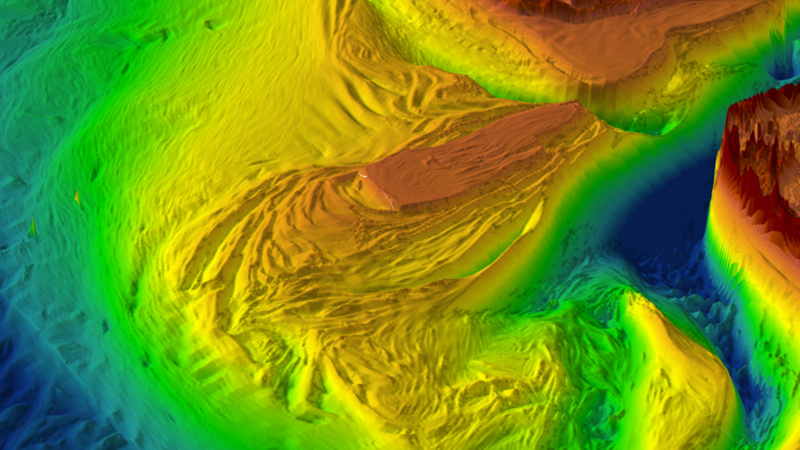Ebb tidal deltas: secret shapers of the Wadden Sea ecosystem

Water and sediment are constantly moved around by the tide and wind. They form the Wadden Sea. Its ecological, cultural and economic development is determined by these daily changes. The trilateral Wadden Sea consists of a number of joined sediment-sharing inlet systems. At the outer seaward margin are the ebb tidal deltas: a huge bulge of sand formed at the seaward mouth of tidal inlets as a result of interaction between tidal currents and waves. Due to their remote location, these areas were not in the focus of attention for a long time.
A recent report offers greater insight into the ebb tidal deltas of the trilateral Wadden Sea ecosystem. Authored by Mr. Albert Oost (Deltares, Netherlands) and others and commissioned by the Wadden Sea Board´s Trilateral Task Group Climate (TG-C), the report contains information on the characteristics and development of the ebb-tidal deltas and addresses their importance for the hydromorphological development of the islands and the Wadden Sea. It is the first report that collates this information for the three countries involved in the management of the World Heritage property, and thus enables a comparison between the nations. It illustrates that much can be gained from a uniform approach to data collection and sharing. The report concludes that enhanced sea level rise due to climate change may have a significant impact on the ebb tidal deltas and that the resultant changes can have a significant impact on the Wadden Sea or the adjacent island coasts.
The authors of the report recommend collaborating more intensely at the trilateral level to enhance understanding of the possible consequences of rapid changes of ebb-tidal deltas and to make an inventory of management options. “A first step could be to gather uniform data and to develop intercomparable analyses. The final aim is to increase understanding of the system to allow for more precise predictions of developments”, says Robert Zijlstra, Interim Chair of TG-C. Other recommendations are to further investigate the relationship between the ebb-tidal deltas and geological subsurface deposits in a tidal inlet system and to study extreme changes in the past, as well as the biology of these areas.
